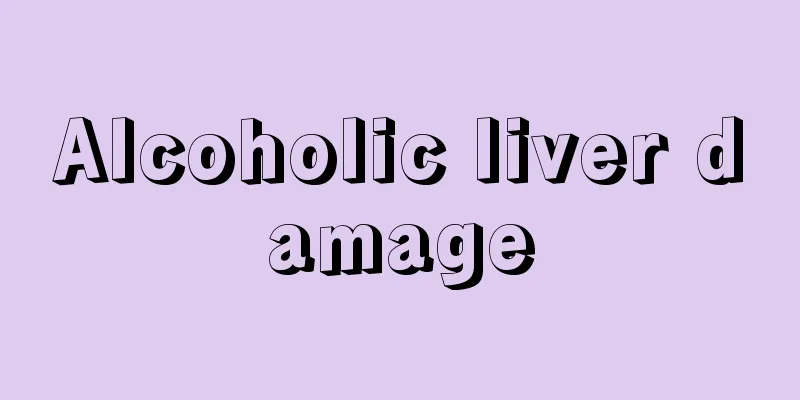How to prevent liver cancer? To prevent liver cancer, we need to do three checks and four treatments

|
We will find that there are many "liver cancer families" around us. The so-called "liver cancer family" refers to a family with many liver cancer patients. When people see this situation, they all think that liver cancer must be inherited or contagious. However, in fact, it is not that simple. The existence of this family clustering phenomenon is determined by multiple factors. The occurrence of liver cancer is related to genetics, common living, and may also be partly related to living environment and living habits. Hepatitis virus infection Liver cancer is not contagious, but hepatitis B virus can be transmitted. Infection with hepatitis B virus can lead to liver cancer. The higher the prevalence of hepatitis B surface antigen in the population, the higher the incidence of liver cancer. If there are more hepatitis B patients in the family, it is inevitable that liver cancer will be more likely to occur. Genetic factors The occurrence of liver cancer does have a certain genetic tendency, but this influence is limited and is not the main reason for family clustering. Similar lifestyle Living in a family, eating habits and living habits are relatively similar. They may like to eat moldy food, such as stinky tofu and other moldy foods. Aflatoxin is an important factor in inducing liver cancer. Moldy food is seriously contaminated with aflatoxin. They may also like to drink alcohol or drink contaminated water from the same well. All of these may lead to the occurrence of liver cancer. Faced with such a high incidence of liver cancer, how should people prevent it in their daily lives? Liver cancer prevention requires "three checks and four treatments" "Three checks": three-level census management, that is, different checks are conducted according to three groups of people According to the degree of liver cancer risk, people at high risk of liver cancer are generally divided into three categories. The first category is high-risk groups, such as patients who have developed cirrhosis due to chronic viral hepatitis (hepatitis B or hepatitis C); The second category is the moderate-risk group, such as patients with chronic viral hepatitis but no family history of cirrhosis or liver cancer; The third category is the low-risk group, such as patients with cirrhosis caused by non-viral reasons. The three-level census is to conduct different examinations according to the three groups of people. Generally, the high-risk group should undergo relevant examinations (liver function, alpha-fetoprotein and ultrasound) every three months; the moderate-risk group should undergo examinations at least once every six months; and the low-risk group should undergo relevant examinations once a year. When a suspicious case is found, CT, MRI or arterial angiography should be further performed until liver cancer is ruled out. “Four treatments”: four commonly used treatment measures for liver cancer Surgical treatment: It is traumatic and expensive. In addition, liver lobectomy is affected by factors such as liver function, liver cancer location, and medical technology conditions. It is not an ideal choice for patients with cirrhosis. Local treatment: Local treatment represented by radiofrequency is less invasive, causes less damage to the liver, and can be used repeatedly. It has become the preferred treatment method for small liver cancer. Interventional embolization therapy: Its efficacy is restricted by the tumor arterial blood supply, and it is difficult to completely kill liver cancer cells, and it has no obvious therapeutic effect on the lesions in the liver tissue around the cancer. Drug therapy: including chemotherapy, immunotherapy, traditional Chinese medicine, gene therapy, etc. Drug therapy is only an auxiliary to surgical treatment, and its efficacy is limited when used alone. Liver cancer prevention: three dietary habits 1. Eat vegetables and fruits regularly The protective effect of vegetables and fruits on the liver is produced by the interaction between the vitamins, minerals, fibers, etc. in them. Green leafy vegetables, carrots, potatoes and citrus fruits have the strongest preventive effect. Dr. Dong Jing recommends eating five or more kinds of vegetables and fruits every day, including a glass of juice in the morning, a piece of fruit in the morning and afternoon, and two or more servings of vegetables at dinner. The total daily intake is about 400-800 grams, which will reduce your risk of liver cancer by 20%. 2. Drink tea regularly to eliminate free radicals People in southern Fujian love to drink tea. Dr. Dong said that it is very beneficial for preventing liver cancer. Tieguanyin, which is common in southern Fujian, is the best, and Longjing before the rain is also good. 3. Eat dairy products frequently Medical research shows that if you consume dairy products, including milk and yogurt, every day while controlling your alcohol intake, your risk of liver cancer will be reduced by 78%. Currently, children have developed the habit of consuming dairy products, but only a few adults do, so this can be improved. |
<<: What causes liver cancer? Check out the 4 real factors that cause liver cancer
Recommend
Remember these symptoms of lumbar spondylosis
Lumbar spondylosis is now a common disease among ...
How to cook rice without a rice cooker
Nowadays, everyone who makes rice has an electric...
Why do my limbs feel sore and weak when I wake up in the morning?
Feeling weak and sore in the limbs when waking up...
The meridians corresponding to the 5 toes
It is said that the soles of the feet are another...
Can wolfberry and rose be soaked in water together? What are the effects
I'm an IT major and I have to face the comput...
What are the causes of lung abscess?
There are many causes of lung abscess, mainly due...
The benefits of cooking millet, mung beans and red dates together
Nowadays, people are more aware of their physical...
Hand, foot and mouth disease recovery symptoms
There are many patients with hand, foot and mouth...
Experts explain common skin cancer treatment methods
Although there are many clinical methods for trea...
Central disc herniation
Central disc herniation is actually a type of lum...
What are the clinical manifestations of post-traumatic stress disorder?
Post-traumatic stress disorder is also called del...
.Where is the liver in the human body?
The liver is an important part of the human body....
Skin cancer patients must pay attention to early symptoms in time
Skin cancer is a serious tumor disease that can c...
Eight "bad habits" make you ten years younger
You must not know! 8 bad habits can make you 10 y...
Is prolonged menstruation a sign of cervical cancer? What are the common manifestations of cervical cancer?
The most obvious symptom of cervical cancer is an...









